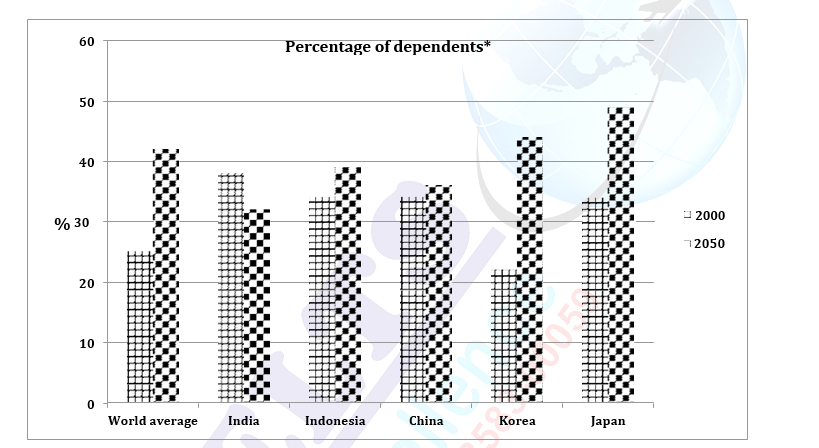
(Dependents: Children below 15 or adults above 65)
The given column graph illustrates the percentage of dependents (children below
15 or adults above 65) in five countries in 2000 and also gives projections for 2050. It also depicts the world average in the given two years.
In 2000, India had the maximum percentage of dependents (38%), with Japan, Indonesia and China following closely behind with around 34% of dependents. Korea had the least percentage of reliant people (22%). The overall world population of children below 15 and adults over 65 was 25%.
Looking into the future, an increase in the population of dependents is predicted for Indonesia, Korea, China and Japan. In contrast, in India the needy population is thought to fall from 38% to 32%. In Korea the population is expected to double by 2050, from 22% to 44%. Approximately 15% rise in such population is predicted for Japan, whereas China is thought to show the least increase (2%). The world average of the dependents is expected to go up from about 25% to nearly 42%.
Overall, the percentage of dependents is expected to decrease in India whereas in other four countries it is projected to increase.
(Note the language for the future and the synonyms for dependents)